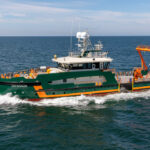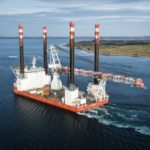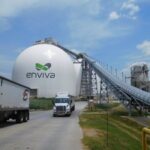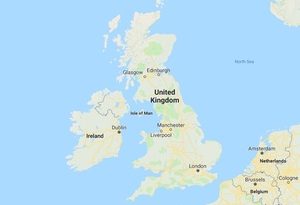MSU works to find long-term plan for biosolid residual materials
Energy Disrupter
ADVERTISEMENT
The City of Detroit has one of the largest, single-location wastewater treatment facilities in the country, which produces a large amount of biosolid residual material as a byproduct.
The Great Lakes Water Authority Water Resource Recovery Facility partnered with Michigan State University to support their long-term plan to best use the biosolid residual materials. Additional partners like WM, NEFCO and the City of Detroit were influential in determining the success of the project. The team from MSU, led by Steven Safferman and Chris Saffron, biosystems and agricultural engineering associate professors, and Umesh Adhikari, post-doctoral associate at the time the project was being conducted, provided clear research to compare methods of treatment for continued evaluation.
“Great Lakes Water Authority greatly appreciates the opportunity to collaborate with multiple partners, including academics, to understand these new technologies and to develop our team members’ capabilities and capacity,” said John Norton, director of energy, research, and innovation with GLWA. “Even a ‘failed’ project can help us understand technologies and processes that we should not pursue.”
Three biosolids treatment methods were evaluated for this project: anaerobic digestor, pyrolysis and anaerobic digestion followed by pyrolysis. For the anaerobic digestion approach, mixing biosolids and food waste together, including utilizing a 3rd party to prepare the food waste, were considered. Each option involved different partners to create the desired finished product, energy, and beneficial byproducts. Projects on this scale are a large investment with a long payoff period and this is the first project of its kind in Detroit so it was key to consider all methods. Safferman’s team put together a step-by-step assessment and methodical evaluation of each individual process to present to the GLWA and recommend the best outcome for the biosolids.
Anaerobic digesters use microorganisms to make biogas that can then be turned into energy. Pyrolysis is a process that uses high temperatures with no oxygen to create energy. In the evaluation of the paralysis method, the first step was to conduct paper studies and models to reduce potential variables. The next step is to conduct lab-scale experiments to reduce variables further.
“The use of pyrolysis to manage biosolids is unique and offers both potential advantages and challenges. We were very excited to have the opportunity to thoroughly research and compare to the more traditional anaerobic digestion approach,” Safferman said.
To read the full story, visit egr.msu.edu
















